As a running coach, nothing makes me happier than seeing the trend towards more runners in their 40’s, 50’s, 60’s and beyond. We absolutely can continue to run or start running well beyond on our 30’s. But what happens to running after 50 for women during peri-menopause and running after menopause?
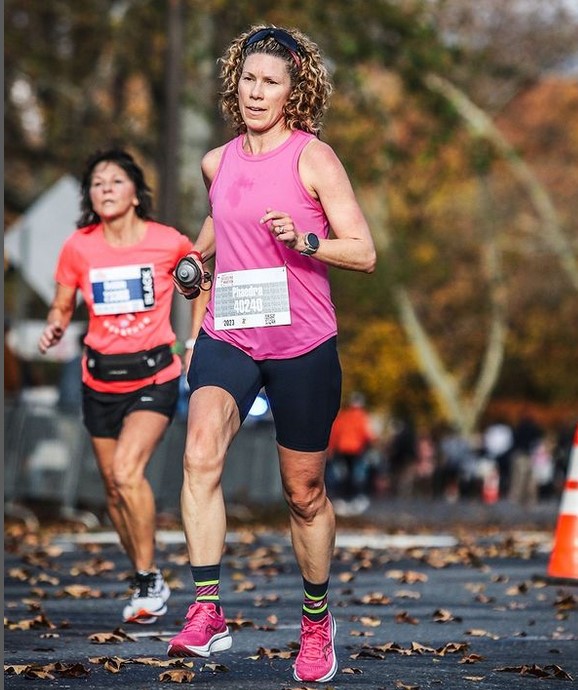
It changes things.
Simply acknowledging that is step one in continuing onward! We can’t just push through and do what we have always done. Your body is changing and your plans need to change to.
Not interested in any of the menopause talk? That’s ok! Gentlemen a great deal of these tips still apply to you as your hormones will also be changing and requiring you to hit the gym or space out hard workouts.
Tips to get started as an older runner >> This will apply to everyone and more details than some sections that follow.
Checkout benefits to training as an older runner >> For when people try to tell you that it’s bad for you to run at a certain age.
Now let’s dive in to running after 50, what does the science say? What does an exercise physiologist who specializes in metabolism in menopause have to say?
Can Menopause Effect Running?
Yes.
During Peri-menopause while hormones are fluctuating there may be days of fatigue and days where your core temperature is higher… but after menopause there are a lot of physiological changes due to the drop in estrogen.
As someone who stopped producing estrogen at 29, I actually got to figure this out early on and have continued running marathons and an Ultra happily since that time!
The idea of menopause exercise intolerance is misguided.
You can and SHOULD exercise, but you might need to shift things in ways you didn’t expect. You absolutely can still do high intensity workouts like running.
Is Zone 2 Running Bad for Cortisol?
One of the themes we’re seeing recently is that because of cortisol you shouldn’t do long distance running as a woman over 50. Or that because we have better fat burning capabilities, you can focus instead on HIIT and still do endurance events.
B.S.
To run long distances, you still need to train your body and mind to run long distances.
That doesn’t mean your volume might not shift. And it absolutely means you need a menopause training plan that includes consistent progressive strength training and hard speed workouts.
Dr Alyssa Olenick goes deeper in to this whole topic on our Tread Lightly podcast. The full podcast is embedded at the end of this article. It’s a must listen!!
Is Running Over 50 Good for You?
Yes!
Let go of the idea that running is “for young people”. It’s just not accurate.
If you’re ready to start running or simply to continue running strong be assured it’s a good thing.
- Joint health of runners is often better than non-runners
- Running provides an outlet for stress
- Running mitigates weight gain from hormones shifting
- Running gives you a community and connection
- Running gets you outside for all the mental and physical benefits of nature
- It’s been shown to help with longevity and mental sharpness
In fact, there’s a reason that races have age group categories.
It’s because we can absolutely continue to not only train smart, but compete! There is an age graded calculator that helps us understand how our pace might show some with each decade.
Though we can hold some of that off with the smart training listed below!
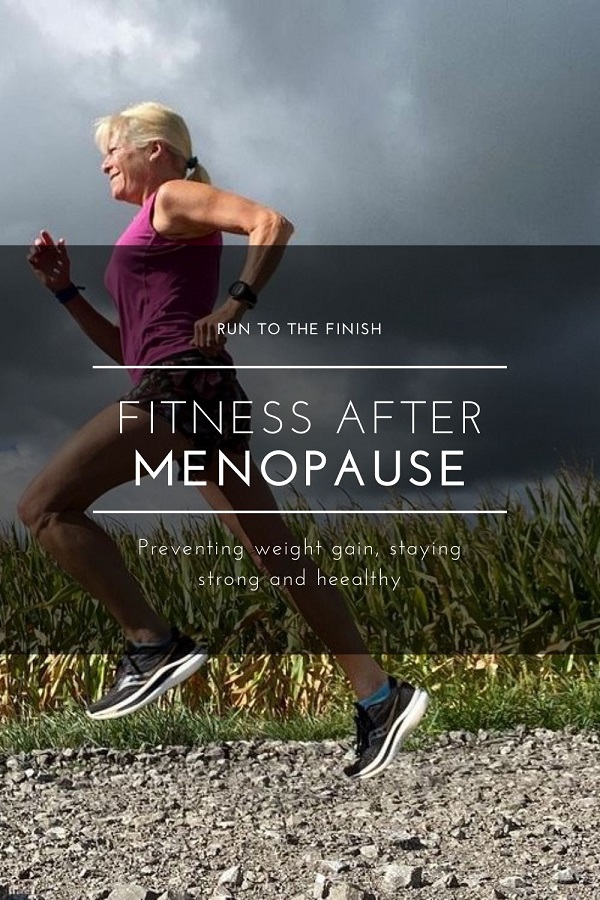 Love Susan B Running for showing us how to keep going and thriving.
Love Susan B Running for showing us how to keep going and thriving.
Menopause Exercise Plan
Let’s take not just my experience, but the things I’ve learned from working with our many older runners, courses from Dr Stacy Simms and more to help guide you through this.
We’ll break these down more below, but a quick overview:
- Easy efforts are the bulk of training
- Plyometrics are a great cross training tool
- Heavy weights are indeed something we can and should incorporate
- Post workout nutrition is ramped up
- Carbohydrate intolerance increases
- Blood marker testing is extremely valuable
There is a lot to unpack in each of these areas, but the key here is that your post menopause exercise plan can absolutely still include endurance training and MUST include strength training.
#1 Why You Can’t Go Hard All the Time?
I mentioned cortisol earlier and you can read all about how cortisol from exercise causes weight gain.
As your estrogen levels drop, the body will make up for that by increasing other things like cortisol.
Every workout will increase cortisol, BUT a daily dose of something high intensity or simply doing all of your runs at a moderate effort will put you in to a too common cycle:
- workout, eat less
- weight goes up
- workout more, eat less
- weight still goes up
- you’re frustrated and totally exhausted
What many runners after menopause find is that LESS exercise and eating enough results in weight loss and feeling so much better on their runs that they perform better.
When you’re looking for exercises for menopause belly, recognize that it’s not about specific movements, but instead about putting this lower cortisol training in place.
How can you do that?
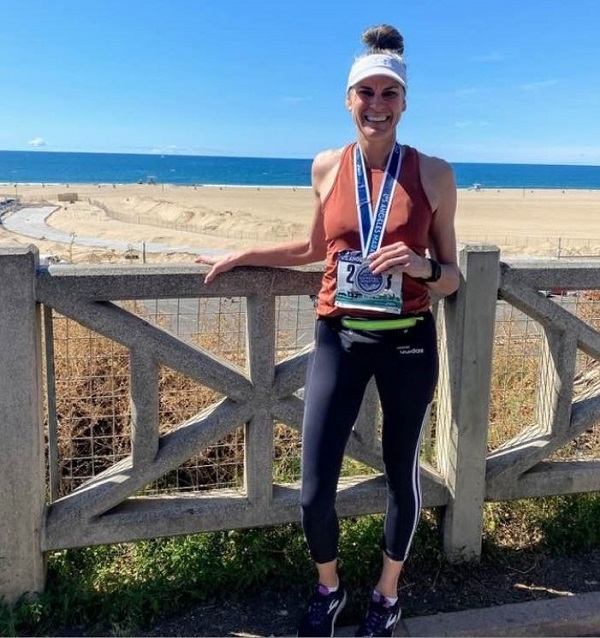
Run To the Finish Masters Running Coach Charlene has been there done that and knows what it takes to run after menopause. Reach out if you’re looking for a 1-1 coach to help customize your running and strength plan.
#2 Plyometrics Over 50
Yes, you can still do them. DO NOT say you’re too old.
As we age, we actually lose muscle POWER and speed even faster than we lose muscle mass. That’s why we’re often still great at endurance, but can’t quite find the speed we used to have.
What that means is strategically using speed workouts and plyometrics to activate our fast twitch muscle fibers.
Aged 50 + is not the same as twenty years ago. We’re living smarter, healthier and more active lives.
If you haven’t been doing anything like this then we simply add them in slowly and methodically. They are a small portion of training, but are necessary to light up those powerful muscles, preventing muscle loss; it improves agility; it helps with speed.
Checkout this article with videos of beginner plyometric exercises >>
- Squat jumps – start by just coming up on to your toes
- Speed skaters – start with small jumps and get bigger
- Jump rope – imaginary jump rope really focused an the ankles being springs
- Box jumps – start by doing single leg step ups
This can be a once a week thing you do prior to a run, which helps get the muscles firing.
#3 Strength Training Over 50
Many women were taught that light weights high reps is what we need to stay “toned”.
While that type of lifting is in fact great for endurance, what it doesn’t do is help us to maintain muscle mass that we are losing so quickly with the decline of hormones. Technically you can build muscle with light weights, but it requires WAY more reps than anyone is doing.
Starting at age 30 we begin to lose muscle mass. This applies to both men and women!
If we don’t do anything to combat that, it explains why we lose endurance, speed and often complain about the changing shape of our bodies.
- If new to lifting, then yes even body weight workouts are AMAZING and necessary to start building a foundation
- Once you’ve gotten consistent with that, try once a week to pick up a weight that you can only do 5-8 reps of and then take up to 1-2 minutes between sets
- You don’t need to do more than 2 rounds if you are lifting that heavy (3 rounds is great, but science says even 2 is going to move the needle)
- Building and holding on to lean muscle mass will increase your metabolism
- Muscle mass improves endurance, speed and weight loss
- Lifting will help prevent injuries by keeping you stable, in better alignment and better able to move throughout your day
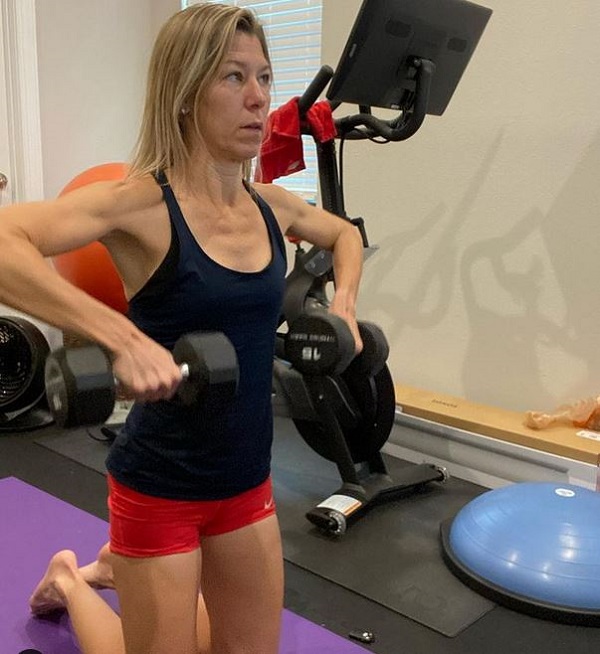
Masters Runner Jolene makes strength a priority and it pays off in speedy racing.
The type of lifting remains extremely similar to what we want every runner to do for injury prevention and performance. Checkout the 30 Day Core Challenge for a daily 10 minute workout that you can do pre-run to prevent injuries.
Did you know that studies show we really only gain 5-10 lbs just because of the loss of estrogen? That’s right, so the rest of it is about changing our lifestyle and our training habits!!
Example Post Menopuase Exercise Plan
What does all of this mean your post menopause exercise plan looks like?
It could mean running 3-4 days in a 7 day cycle and spacing out hard workouts on a 10 day cycle.
- Monday: Long run
- Tuesday: Complete rest day or core workout
- Wednesday: Core workout, easy run
- Thursday: Full body strength
- Friday: Easy run + strides
- Saturday: Core workout, easy run
- Sunday: Full body strength
- Monday: rest
- Tuesday: Core workout + plyometrics
- Wednesday: Long run
Another piece that we need to remember to work on is range of motion.
You’ll get a number of hip mobility workouts in the 30 Day Challenge, but you can find some hip mobility workouts here too.
#4 Post Workout Nutrition Changes with Menopause
One of the big bummers about menopause is the body does not process carbohydrates as well, so we have to be even more careful with any simple sugars. THIS DOES NOT MEAN GOING LOW CARB.
Instead, we want to utilize carbohydrates strategically to boost our fitness and recovery.
Eating carbs before, during and after your workouts is key. That’s when your oatmeal with honey or your post workout smoothie with fruit are put to use by the body for energy and recovery.
Additionally, we’re seeing more and more data that protein is a must. The basic FDA recommendations are not enough to maintain muscle as we age, instead a good rule of thumb for active people is actually closer to 1 gram per pound of bodyweight (minimum 100 grams per day).
- Within 30 minutes you need to get in a high protein recovery meal
- Try a high protein smoothie if you aren’t hungry
- Leucine is the key piece of protein to help you build and maintain muscle
- Improving recovery means having the energy to go again the next day
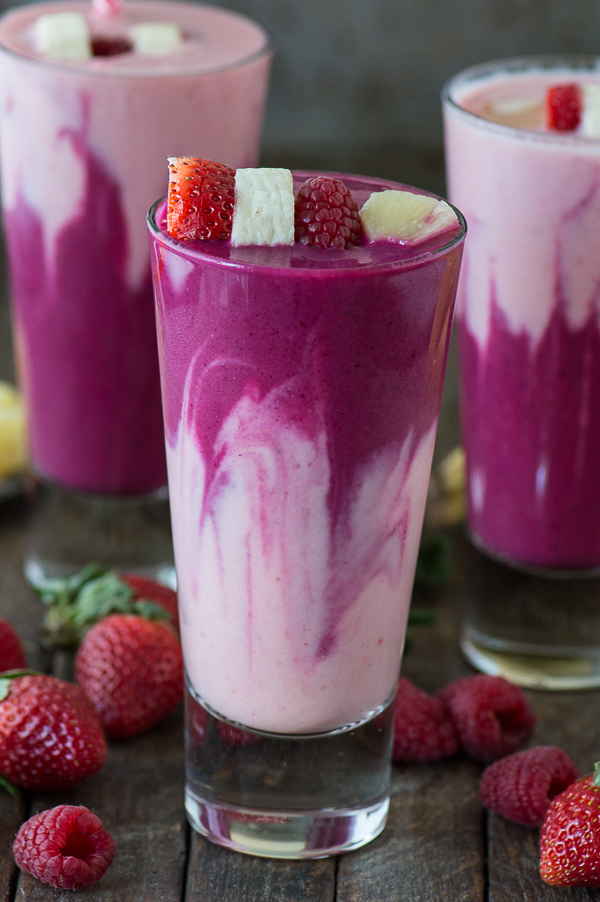
#5 Blood Testing for Runners
This isn’t about tracking your hormones like estrogen, which we know have dropped.
Instead, we are looking to stay on top of the other markers which play a HUGE role in your feelings of fatigue or even just low emotions.
Find out more about blood testing for athletes and what I recommend, but here’s at least part of what we’re looking at:
- Cortisol levels – weight gain, mood, sleep issues
- Vitamin D – mood, energy
- Iron – fatigue, energy, hair loss
- Ok fine all the vitamins and minerals because they’re going to help you feel better
What About HRT for Runners?
One of the most insightful books I read last year was “Estrogen Matters”. It provides a ton of in depth research around estrogen, the benefits to starting to supplement early in peri and menopause.
For runners, being able to maintain that hormonal balance might slow down some of the muscle loss that accelerates with menopause, improve sleep quality and help with overall energy levels. All of that is going to make training feel so much better.
If you’ve had a DR tell you no, definitely checkout that book to get yourself up to speed and then make a choice about looking for another DR or being ok where you are.
What do you have to lose?
What you should be noticing from all of this is that you CAN absolutely still train for a marathon or hit your first pull up or even run a PR.
It requires that you start to embrace what is different about your body and change your training to match those needs. The pull back from intensity is usually the hardest part for most people because it feels contrary to what we know….
Do less and lose weight.
Do it easier and run better.
Those things seem wrong, but it’s a different phase of training!
Just like you find yourself trying different models of running shoes over the years, as your body changes…you need to be open to styles of training as well.
Commit to 90 days with this style of training and you will see changes.
Additional Menopause Athlete Resources
Let’s start with our recent podcast episode which is filled with incredible information from a researcher you may know DocLyss.
If you’re looking for some additional training tips:
Other ways to connect with Amanda
Instagram Daily Fun: RunToTheFinish
Facebook Community Chatter: RunToTheFinish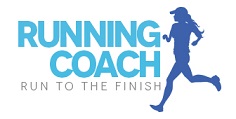
Sign Up to Receive a Weekly Newsletter of Tips

